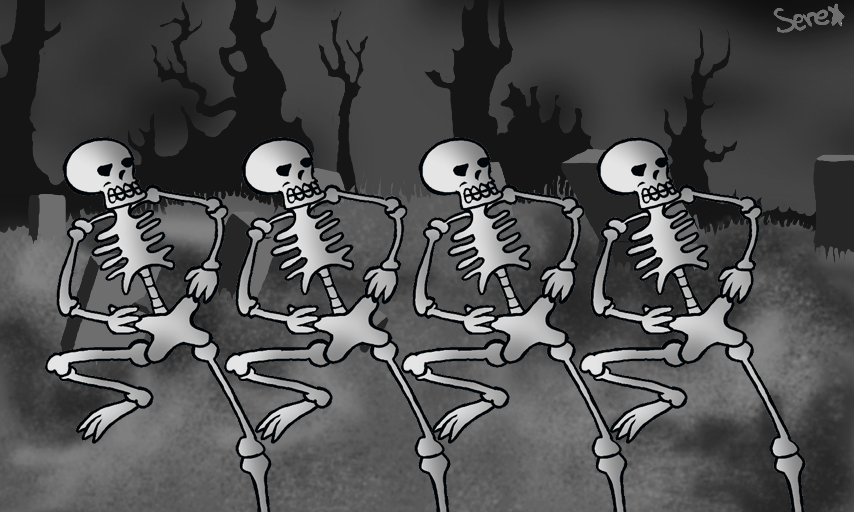Spooky Scary Skeletons

In the realm of the eerie and the uncanny, few things evoke the spine-tingling sensation quite like the image of skeletons. Whether dancing in the moonlight of a Halloween night or lingering in the shadowy corners of our imagination, skeletons have long held a fascination that transcends time and culture. From ancient folklore to modern-day pop culture, let’s delve into the origins, symbolism, and enduring allure of these spooky, scary skeletons.
The Roots of Fear
Skeletons have been a fixture of human imagination since time immemorial, often serving as potent symbols of mortality, the afterlife, and the macabre. In various mythologies and folklore traditions around the world, skeletal figures are frequently associated with death, spirits, and the supernatural.
In ancient Greek mythology, for instance, the god of the underworld, Hades, was often depicted as a stern figure wielding a scepter and wearing a cloak adorned with skulls and bones. Similarly, the Aztecs revered Mictlantecuhtli, the skeletal deity ruling over the realm of the dead, whose visage adorned temples and artifacts throughout Mesoamerica.
Cultural Symbolism and Ritual
Beyond their associations with death and the afterlife, skeletons have also played significant roles in cultural rituals and practices. In Dia de los Muertos, or the Day of the Dead, celebrated in Mexico and other Latin American countries, skeletal imagery is ubiquitous, serving as a vibrant symbol of honoring deceased loved ones and celebrating the continuity of life.
Moreover, skeletons have often been used in various cultural contexts to convey moral and existential themes. In the allegorical tradition of medieval Europe, for example, the Dance of Death depicted skeletal figures leading people from all walks of life to their inevitable demise, emphasizing the universality of mortality and the transience of earthly existence.
From Gothic Horror to Pop Culture Phenomenon
The depiction of skeletons as embodiments of horror and dread reached new heights in the Gothic literature of the 18th and 19th centuries. Writers like Edgar Allan Poe and Mary Shelley infused their tales with chilling imagery of skeletal specters and animate corpses, tapping into the primal fears and anxieties of their audiences.
In the 20th century, the rise of horror cinema further solidified the iconic status of skeletons in popular culture. From the stop-motion wonders of Ray Harryhausen to the iconic dancing skeletons in Disney’s “The Skeleton Dance,” these bony figures have continued to captivate audiences and fuel our collective fascination with the macabre.
Modern Interpretations and Creative Expressions
In the contemporary era, skeletons have transcended their traditional associations with fear and mortality to become versatile symbols in art, fashion, and entertainment. Artists like Frida Kahlo and Damien Hirst have incorporated skeletal motifs into their works to explore themes of life, death, and identity, challenging conventional notions of beauty and existence.
Meanwhile, in the realm of fashion and design, skeletal imagery has found its way into everything from haute couture to streetwear, serving as a bold and provocative statement of style and individuality. Similarly, in the world of digital media and gaming, skeletons are a staple presence, whether as fearsome adversaries in dark fantasy realms or whimsical characters in quirky indie titles.
Conclusion
In the grand tapestry of human culture and imagination, spooky scary skeletons occupy a unique and enduring place. From their roots in ancient myth and folklore to their contemporary incarnations in art, entertainment, and fashion, these bony figures continue to intrigue, unsettle, and inspire us.





